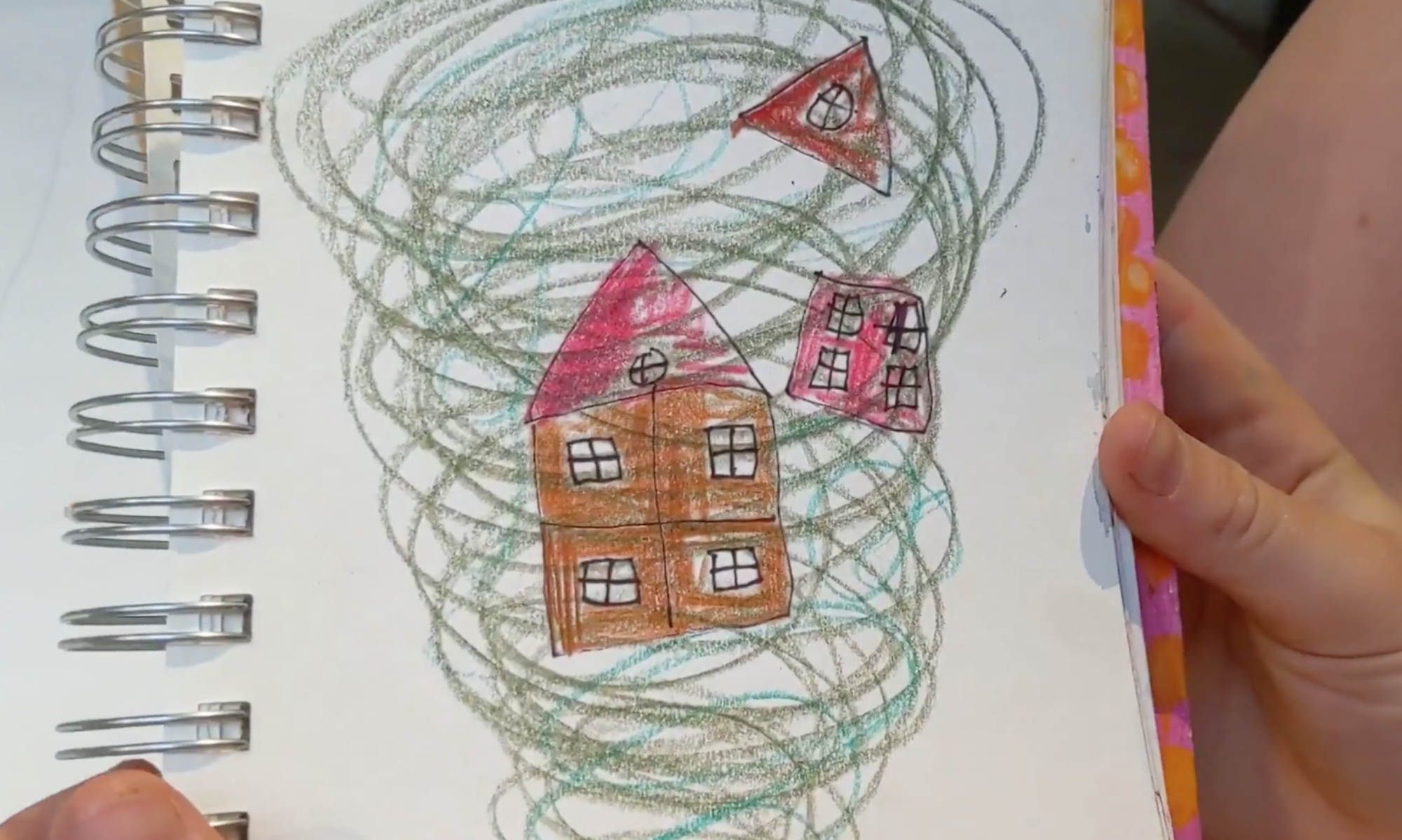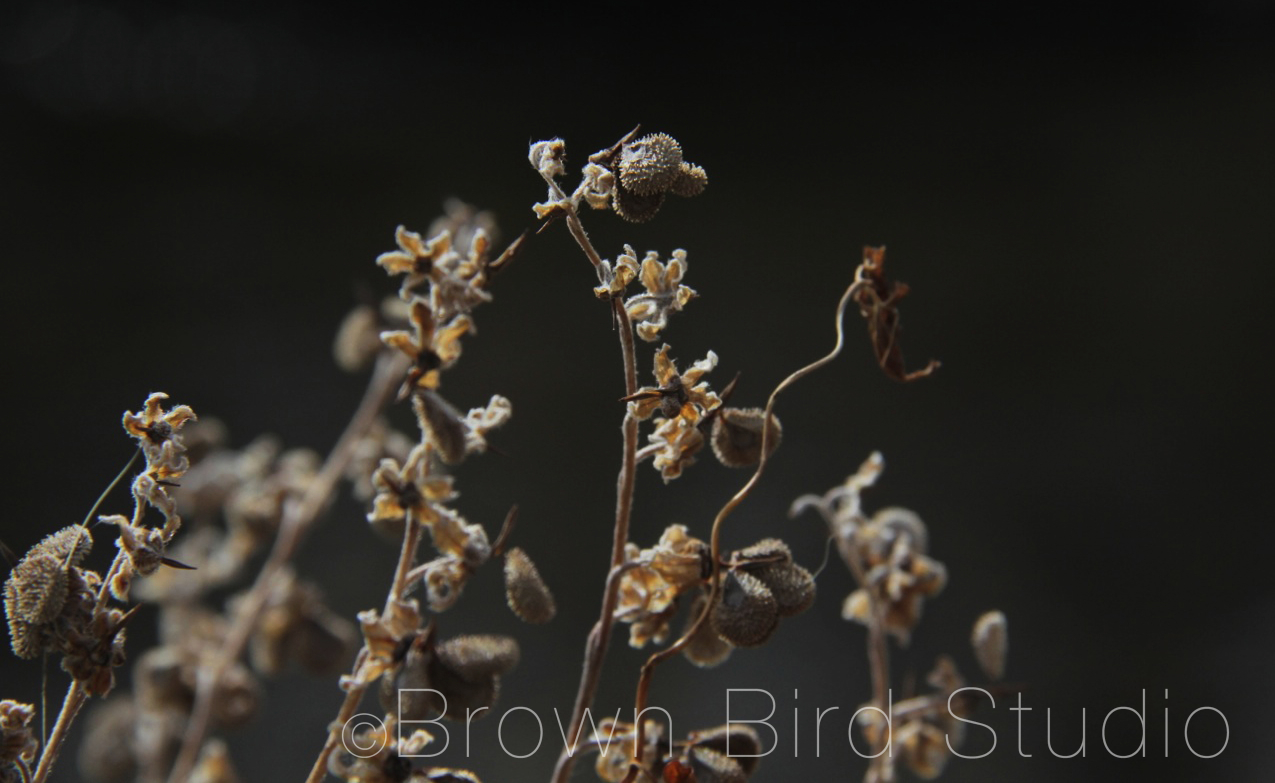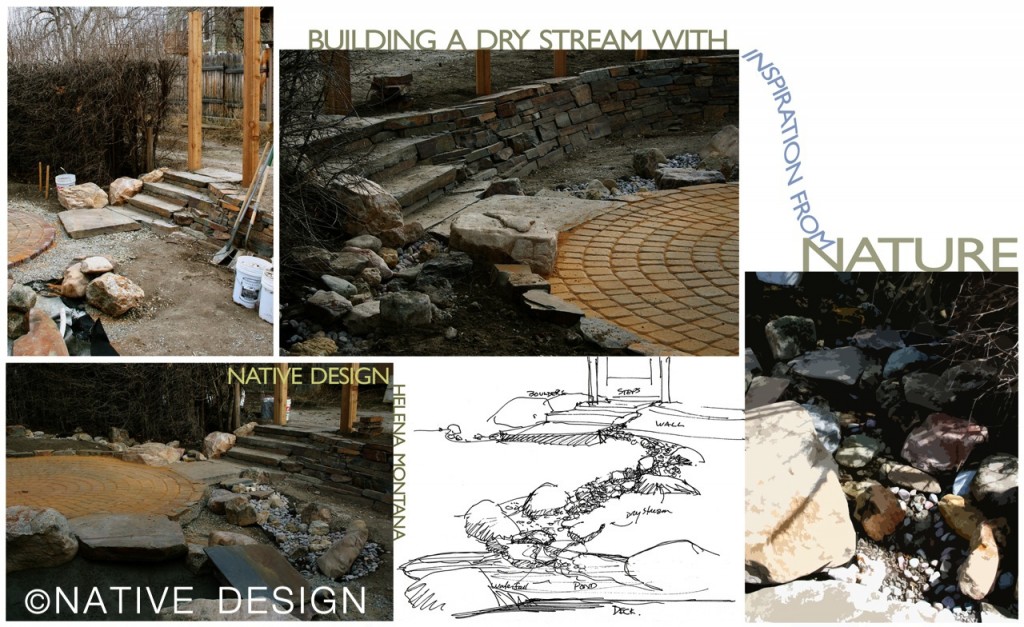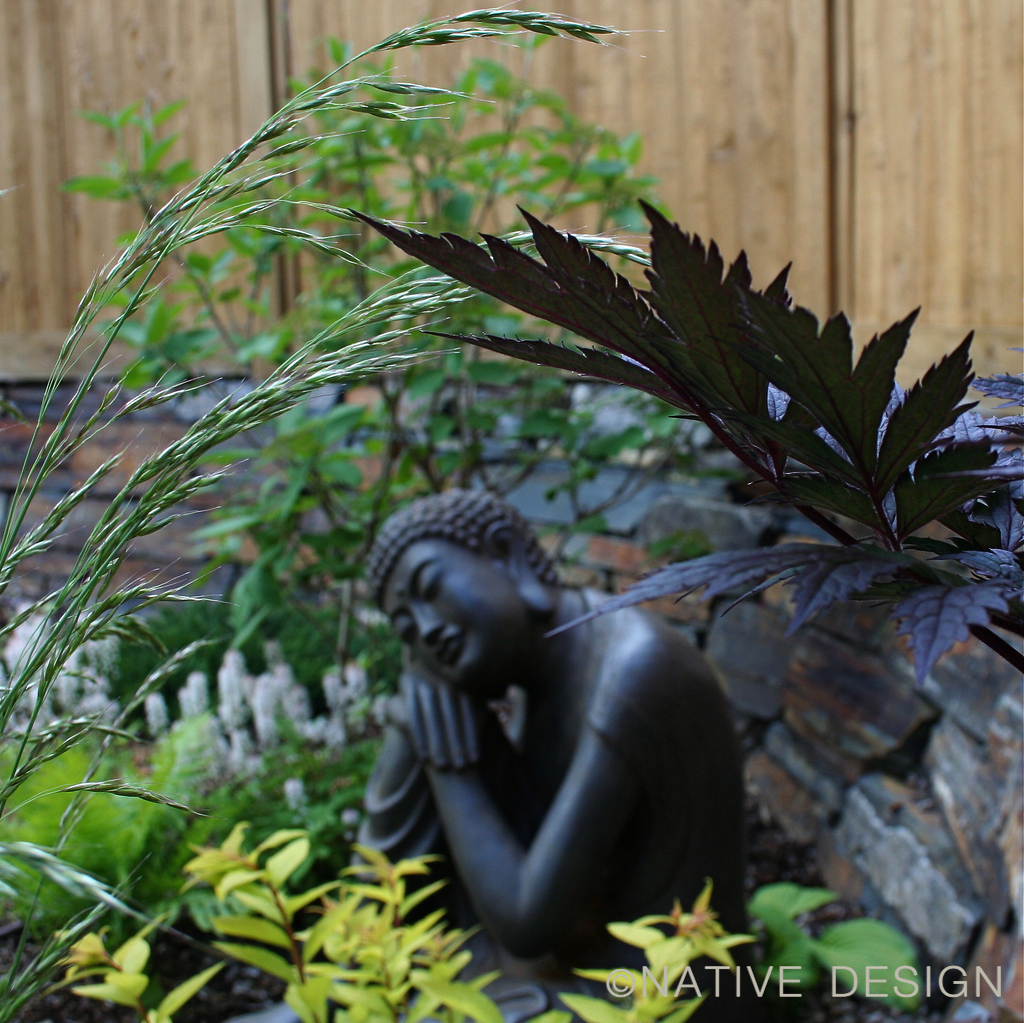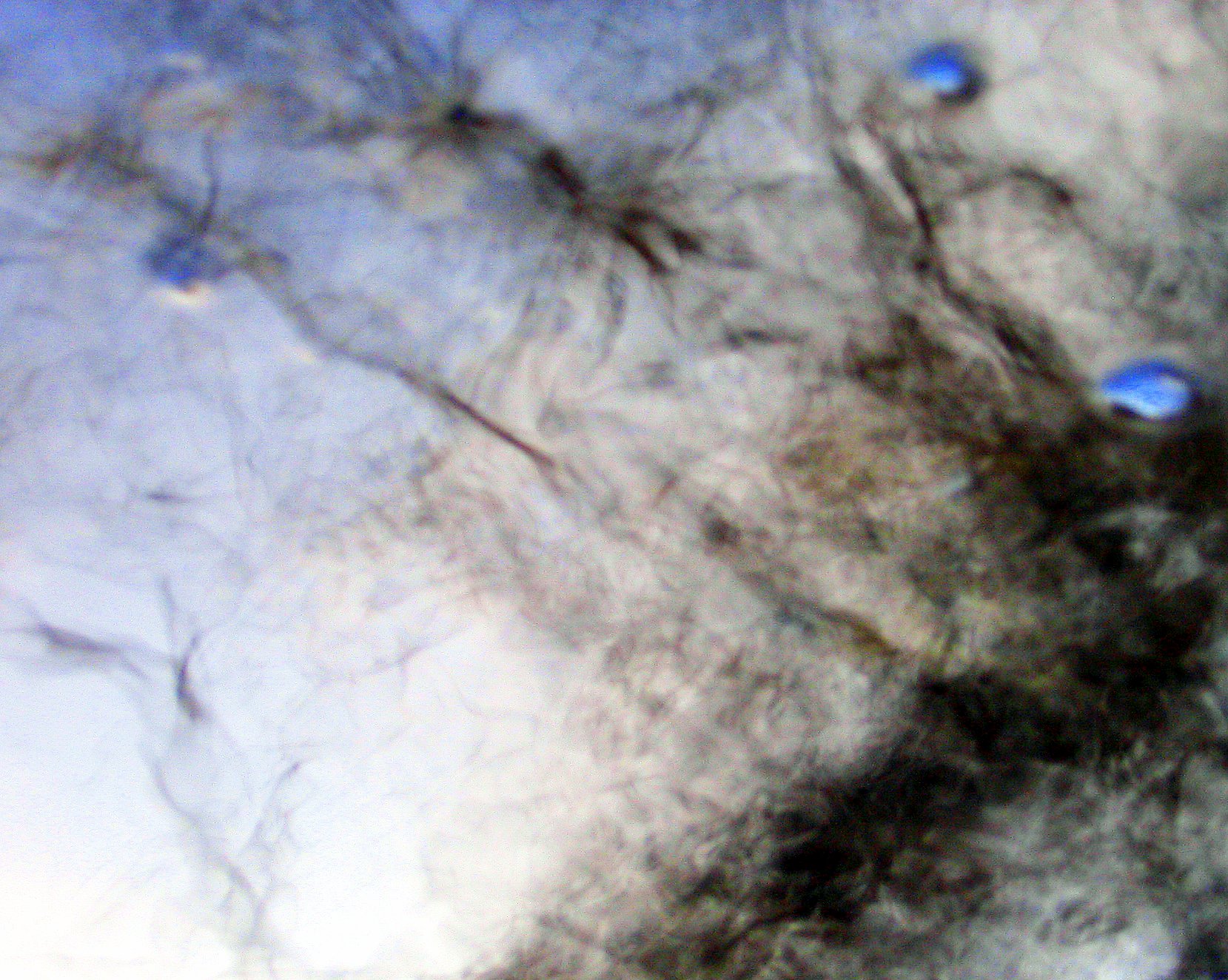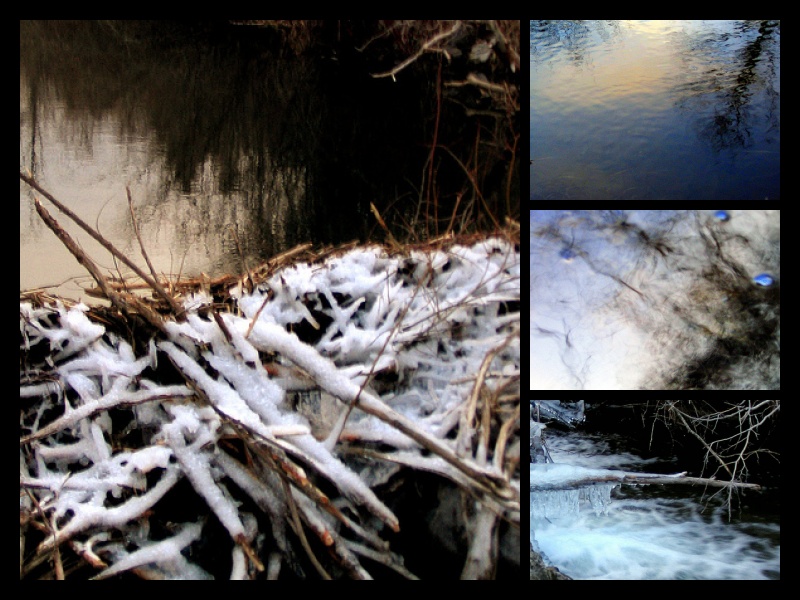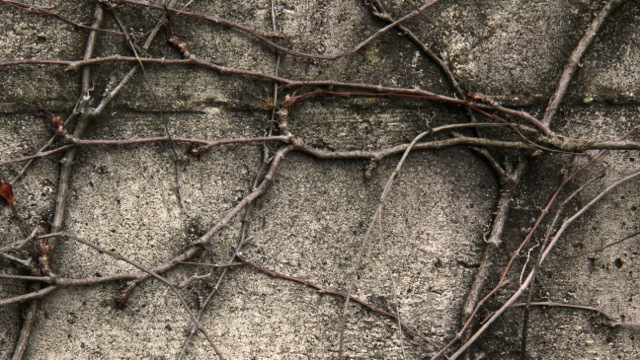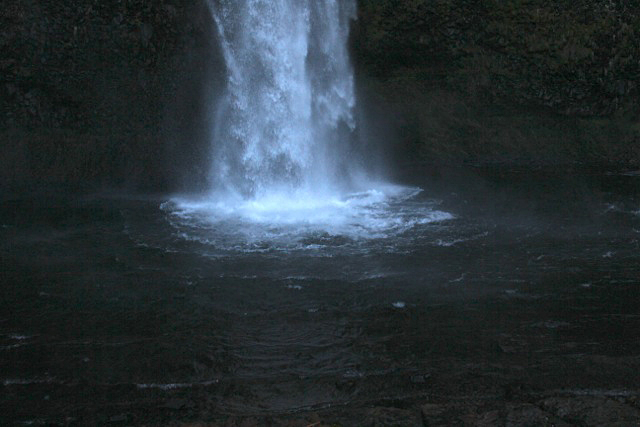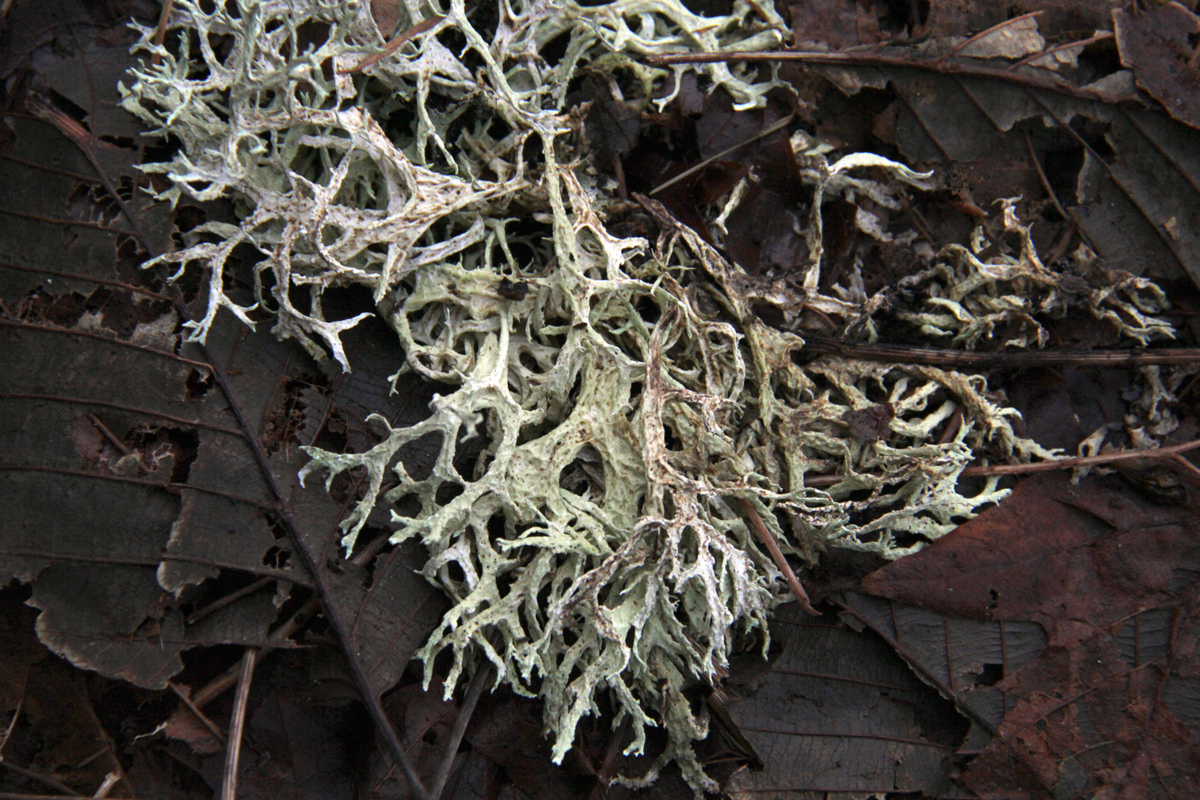like lines of a poem, tendrils, stems
and seeds of a hitchhiker weed
twist, turn and stick in my memory
Water Features in the Garden: How to Visually Connect Them
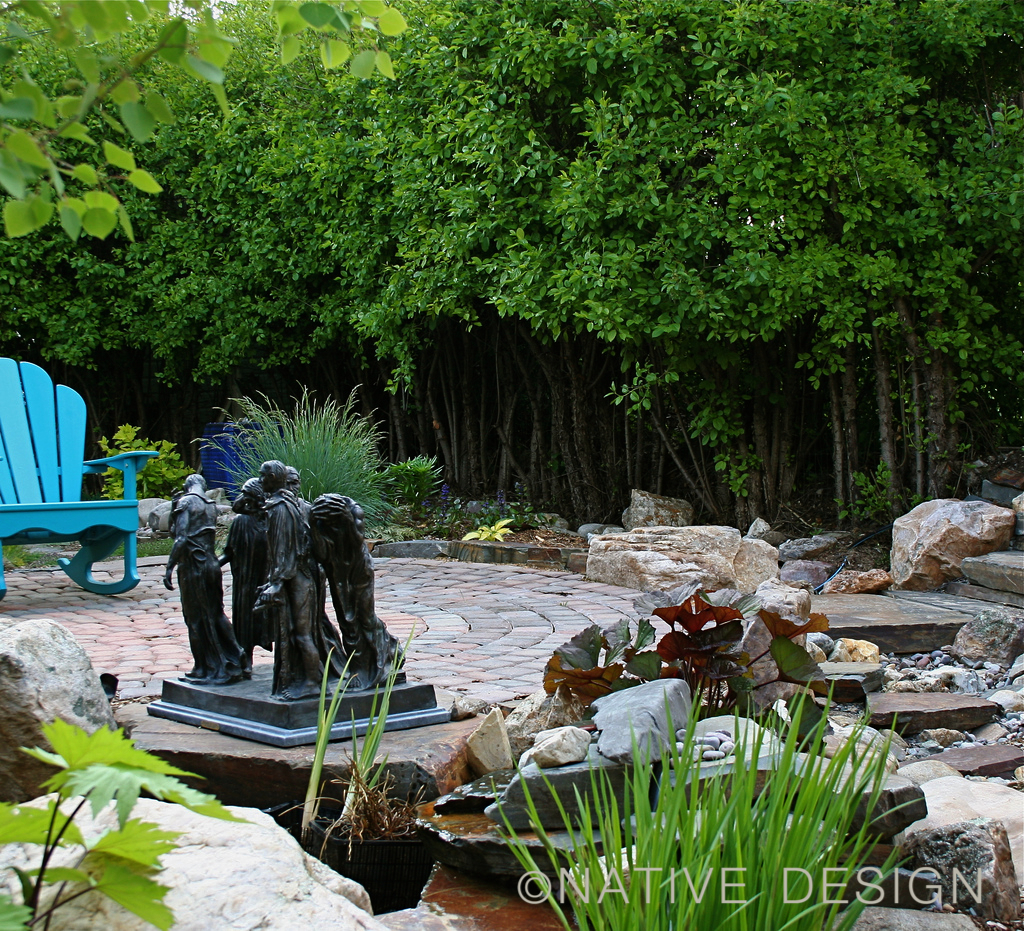
Garden features such as urns, ponds and small flowing streams can add to your enjoyment of the garden as well as connect the different parts of your garden together.
Here is an example of an outdoor room with two water features. The water features — a flowing urn and a pond — are separated by a distance of about 25 feet in this garden. We needed a design solution to visually connect them. The garden’s pond is located next to a low deck and appears to extend under the deck. The second water feature is an overflowing urn fountain on the other side of the small garden (in the photo above, look for the blue urn, barely visible behind the ornamental grasses.) The water flows over the rim of the urn and disappears into a hidden reservoir under the container. We wanted to visually and psychologically connect the urn fountain with the small garden pond as well as solve a drainage problem.
Our solution was to build a dry stream bed using the same stones we used in the pond and around the urn. The dry stream gives an illusion of flowing water and in the imagination and mind of garden visitors, the urn is a perpetually flowing source of clear fresh water for the pond.
In order to fool the eye and create as natural-looking a stream bed as possible, I took my inspiration from the way bedrock, boulders and cobbles come to rest in a mountain stream. Too many times when folks attempt to create a dry stream bed in their landscaping it results in something that looks very unnatural — or worse. The tendency people have is to dig a swale or channel; line the edges with large rocks and fill the center with smaller river rock. That isn’t the way river dynamics form streams in nature.
In the center of the above montage, you can see the rough sketch I made before we started construction. It’s almost impossible to design the exact layout of water features, when working with boulders and other natural materials. Fortunately I was able to stay involved in the construction process to make sure the final results matched what was in my head. I also owe much of the credit to the contractor who installed the water feature — he was sensitive to the same forces of nature I observe, and we worked well together.
If you want to design water features in a “natural” style, consider water’s natural behavior — particularly the way water affects the environment through which it flows. Take a hike in the mountains and observe the way gravel and cobbles fill the nooks and crannies between boulders lin a tumbling mountain stream. Gravel is lighter than boulders, so it is picked up and carried by water more readily than the larger stones. Spring runoff and high flows are strong enough to move boulders so these are shifted until they get stuck in a tumbly looking pattern. If you live in a valley — there may be natural water features you can imitate. A stream or river can give you design clues in the shape of the meanders, the oxbows, the inner and outer curves and how the banks are sculpted by the flow. Where are the large rocks, if any? Where is the gravel deposited and is it all the same size?
What other garden features might benefit from an observation of nature in the design process? Ponds, boulder benches, stepping stones and other pathways, terraces, stone walls, even steps leading from one garden level to another. These will be topics in at least one future post so check back for more design inspiration.
Links that might help with designing garden features in a “Nature Inspired” style:
- Looking to Nature for Inspiration for a Water Feature
- Lawrence Halprin, water feature-master sees garden/landscape forms in nature
- Reflecting Nature: Garden Designs from Wild Landscapes
- Through Nature’s Eyes: the look of a low-maintenance landscape
- Using Plants to Soften Your Water Feature, from the Journal of Japanese Gardening
Here are some more photos from this garden installation and it’s first year. There are several nature-inspired garden features in this small private landscape project including dry-laid stone walls, shade structures, a wandering stepping stone pathway, boulder benches and a total absence of lawn. Click on any of the photos to see a larger version. Enjoy! And please comment if you have any questions about your own water feature. Thank you for reading!
Night Swimmers
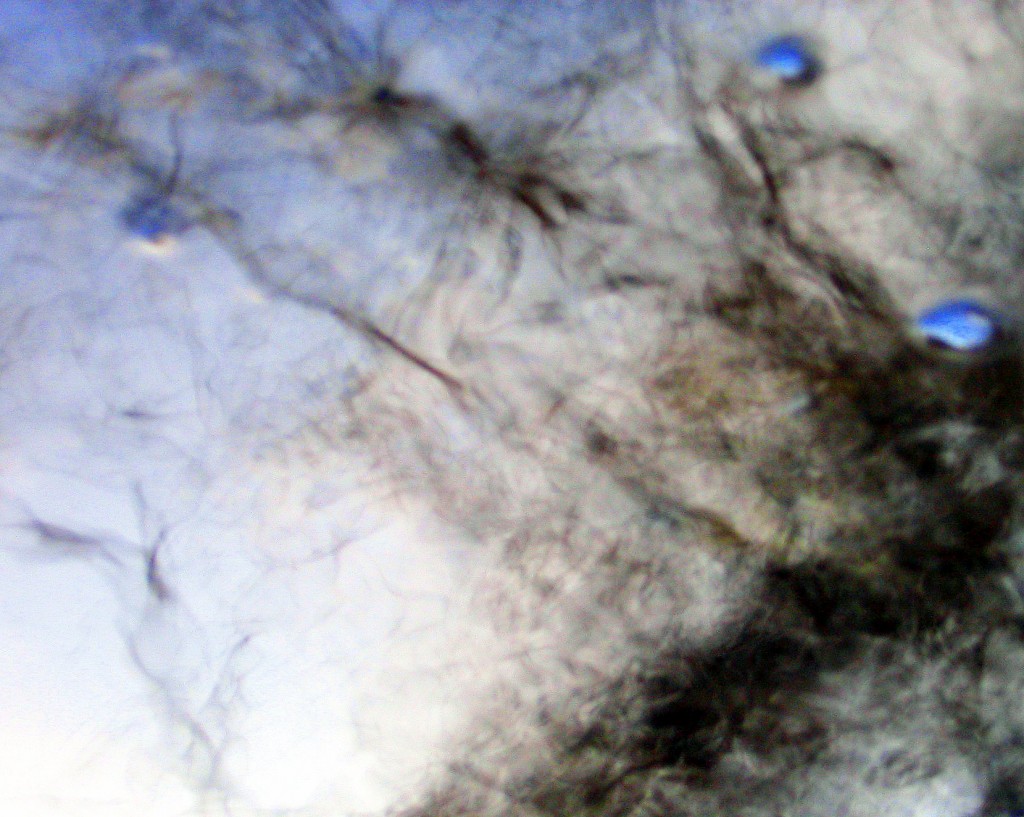 Last night, just moments before the sun went behind the ridge, I stopped along Prickly Pear Creek just a little south of East Helena. There, the creek runs between two ridges and has been used and abused for years, by locals who toss beer cans and garbage in the gulch,and by hunters who discard elk and deer carcasses after taking what meat and trophy parts they want to keep.
Last night, just moments before the sun went behind the ridge, I stopped along Prickly Pear Creek just a little south of East Helena. There, the creek runs between two ridges and has been used and abused for years, by locals who toss beer cans and garbage in the gulch,and by hunters who discard elk and deer carcasses after taking what meat and trophy parts they want to keep.
I had driven by this creek numerous times, though I hadn’t stopped until now. I had Sam with me and we both wanted to get out someplace new. So, this is where we ended up. I had to keep Sam on a leash for this walk – if I hadn’t, he would have availed himself of the opportunity to douse with that special fragrance loved by dogs — “Eau de Carcasse.” There were at least 30 carcasses along the stretch of water we walked. Eeeuwww!
I had my camera with me, of course. The light was fading fast and I knew I had to hurry to catch it before nightfall. As I looked around for something that appealed to me — a scene or detail I might want to shoot, I thought about what many people have told me when they see my photographs of Montana — that I must live in Paradise, that Montana is so beautiful, pristine, that they want tovisit here, to see what (I) see.
Yet here I was, scanning this trashed-out, dumping place for some little detail to photograph. It was worse than a garbage dump. This creek with its sad parking spots, its lovers’ lane, its game carcasses strewn in the bushes … this damaged wetland was a stark testimonial of how little we humans care for the earth.
In anger, I almost turned right around to leave. But something in the water caught my eye. A beaver dam, breached in the middle, icy willow branches bravely stacked against the winter, against the beavers’ predators. The little dam was something I needed to see last night – it was a glimmer of optimism, of hope, in this trashed out riverbottom.
I sat for a few minutes, just feet from the large ribcage of an elk. I scolded Sam for being too interested in the bones. He put his head on his paws and watched me shoot — quickly — as the light changed and the water shape-shifted.
I wanted to redeem my species somehow, to reach back in time, find the memory of who this little dancing creek had once been, before the cement plant started polluting the waters, before people started using the valley as an unofficial dump and drinking place … I wanted to catch the narrow slice of sky reflected in Prickly Pear Creek. I wanted to remember, with my mind’s eye and my camera, the way graceful branches danced with the current.
I tossed a stone just upstream of the beaver dam. I clicked and clicked the camera shutter until I could see only the beauty of water, of evening, of a beaver’s industry and natural design …
until I could see
only the deep
blue sky and black
branches and golden
light swimming in
blue night
rippling
This is how to see the place where you belong.
This is how to love
the places you spend your days and nights.
Look under the surface
love the beauty you find there
no matter where you are.
